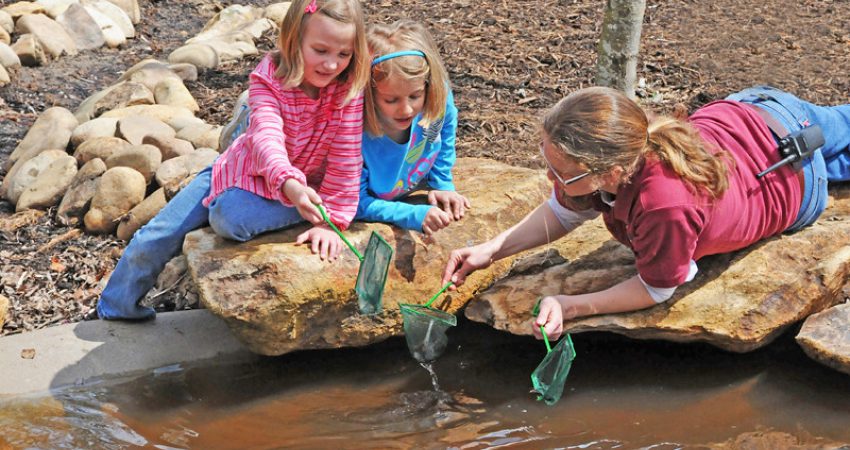
By Melissa Ballard - November 2015
PAPER CITATION
Bathgate, M. E., Schunn, C. D., & Correnti, R. (2014). Children’s motivation toward science across contexts, manner of interaction, and topic. Science Education, 98(2), 189–215.
Bathgate, Schunn, and Correnti investigate students’ motivation toward science across three dimensions: the context or setting, the way in which students interact with science materials or ideas, and the activity topic. Findings point to the importance of understanding children’s perceptions of specific science topics level, not just science in general.
Research Design
Participants in the study included 252 fifth- and sixth-grade students from Pittsburgh, Pennsylvania, and the Bay Area, California. Student socioeconomic status or ethnicity was not captured, but publicly available school enrollment data indicate that Pittsburgh students are primarily white and African American and Bay Area students mostly white, Hispanic, and Asian. Participants’ schools were not markedly higher- or lower-performing schools.
Students completed an online survey either in their school science classroom or during a class trip to a local museum. The survey examined several aspects of motivation toward science, including curiosity, interest, willingness to persist in activities, personal responsibility for learning, and students’ value of science and expectations of performance. These measures represent a range of theoretical traditions relevant to science motivation in late childhood and early adolescence, and have shown to be predictive of long-term engagement in science.
The survey first asked students to identify science topics in which they were most interested and to select their favorite. The topics were spread equally across five general science disciplines including astronomy, biology, earth science, engineering, and physical science.
The remaining survey questions asked about students’ motivation toward science across the three dimensions: context, manner of interaction, and topic. Each dimension included three sub-scales.
- Context
- Formal: relating to school classroom experiences
- Informal: occurring outside the classroom in settings such as at home, at camp, in a museum or zoo, or with friends
- Neutral: the context was not specified
- Manner of interaction
- Consuming new knowledge: studying, reading, or searching online for new science information
- Analyzing: thinking about information already learned
- Action: physical, hands-on activity
- Content
- Individual science topics: the same list that began the survey
- Science in general
- The individual student’s favorite topic from the beginning of the survey, which was automatically inserted into 16 survey items
Each of the 89 survey questions included a motivational construct and at least one of these three sub-scales. For example, one question is, “I would keep studying science, even if my teacher tells me I’m not good at it.” The context is “formal,” the manner of interaction is “consuming new knowledge,” and the topic is “general science.” The motivation construct addressed is “persistence.”
Research Findings
Students had highly divergent responses to content topics and showed clear preferences for certain topics; for example, some really liked biology but really disliked engineering. Students responded most positively to survey items containing their favorite topic, followed by “science” generally and then by the domains of biology and physical science.
Students’ responses to topics were more varied than their responses to context or manner of interaction. Activities in formal or informal contexts showed little variation in responses, though the informal context scored slightly more negatively. In terms of the manner of interaction, students preferred consuming new knowledge and analyzing to action-oriented science activities, although the difference was small.
Theoretical Basis
This study is framed by a cognitive theory of learning, which measures motivation and persistence in individuals, separate from their context. As is common in this theoretical tradition, researchers intended to isolate school and museum experiences of individuals in order to obtain information about generalized student motivation. In this case, researchers conducted surveys of students from schools with different teachers in different cities who attended different museums without collecting individual-level information on socioeconomic status, ethnicity, or family background.
Implications for Practice
A big takeaway from this study is the significant effect of the specific topic on children’s stated interest in or motivation toward science. However, as the authors remind us, why certain topics tend to elicit more positive responses is not obvious. Informal science educators and researchers must continue to interrogate how a topic becomes a child’s favorite, paying attention to the qualitative experience and the social component accompanying an activity. Educators should keep in mind that young people have particular, often quite emphatic, preferences of science topics. Framing a less popular topic differently might help to break down those preconceptions.
Additionally, this study’s findings challenge the assumption that science experiences are inherently more motivating if they are active or occur in an informal context. We don’t know the exact reasons why students in this study responded less positively to science activities in these two dimensions. As the survey did not capture the nature, frequency, or quality of students’ past experiences with informal science or with hands-on science, further research to home in on these aspects would be highly beneficial.




